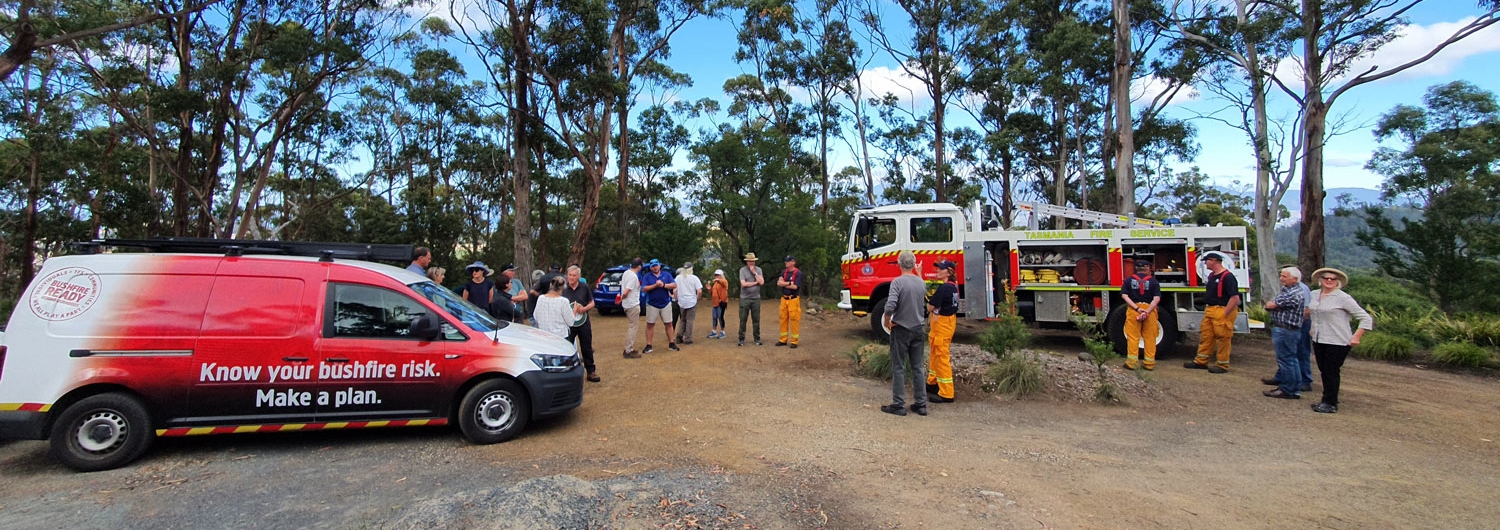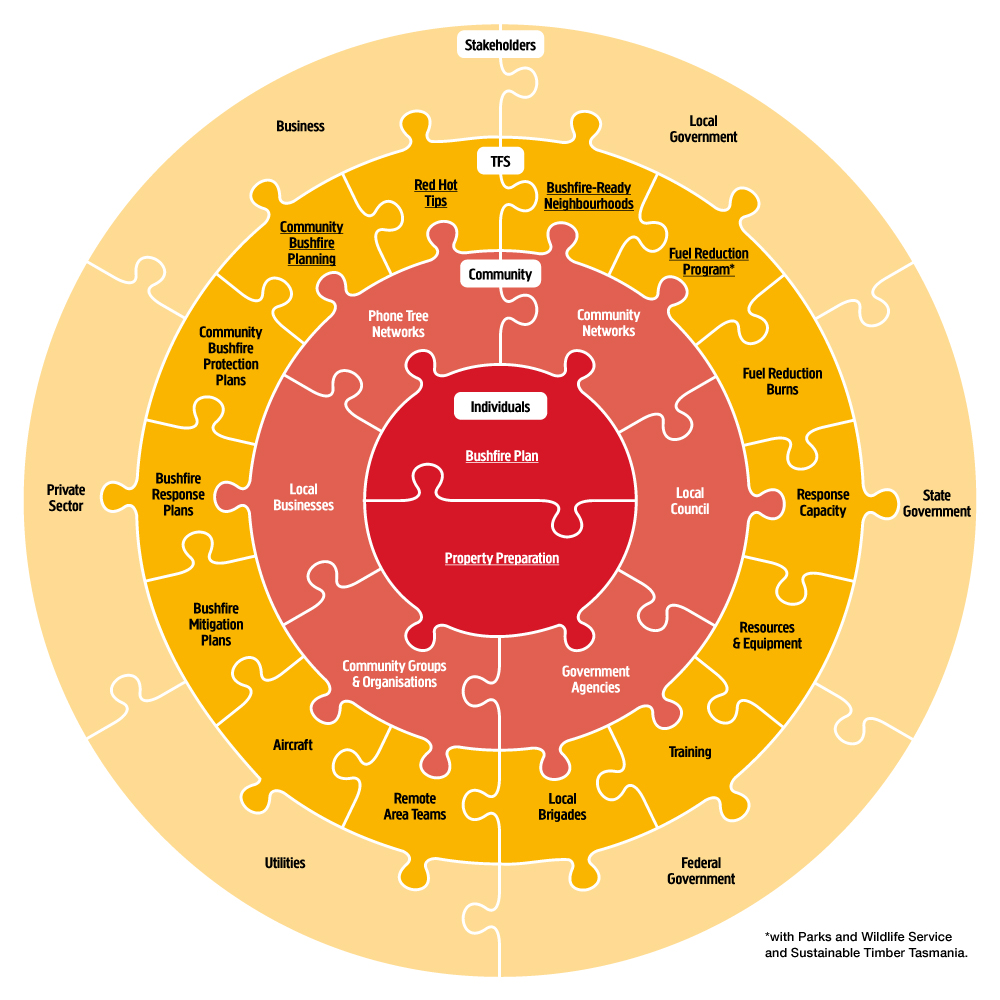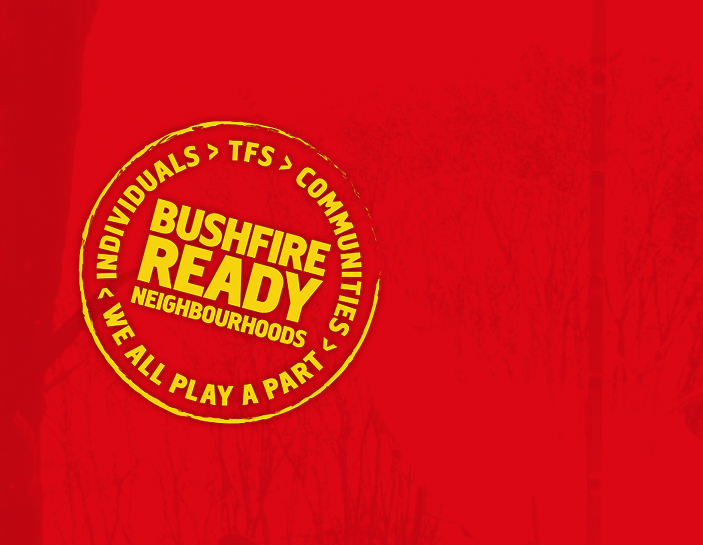Mitigating bushfire risk - we all play a part

Mitigating bushfire risk - we all play a part
There are many different definitions of bushfire mitigation. In a nutshell, you could say it is about:
- Building community resilience
- reducing the risk of bushfires and their severity
- building capacity to prevent, respond to and recover from bushfires.
Some bushfire mitigation activities are managed by governments and the fire service, but many of them cannot be achieved without the support, help and involvement of the Tasmanian community.
Bushfire mitigation activities such as the Fuel Reduction Program, Community Bushfire Planning and Bushfire-Ready Neighbourhoods are part of core business for TFS, but there are many other stakeholders involved in bushfire mitigation activities as well.
Examples include the Tasmania Parks and Wildlife Service and Sustainable Timbers Tasmania partnering with the Tasmania Fire Service in the Fuel Reduction Program; local councils contributing to reducing bushfire risk through slashing and weed management programs and preparing Municipal Emergency Management Plans to enable them to reduce risk to the community from the threat of bushfires and other emergencies; and utility providers protecting key infrastructure by maintaining asset protection zones (a buffer zone where the amount of vegetation (what we call fuel) is reduced, to name a few.
Fuel reduction burning is a well-known piece of the bushfire mitigation jigsaw puzzle. As the name suggests, fuel reduction burning aims to reduce the amount of fuel available to burn in a bushfire so that bushfires are less likely to burn as quickly or intensely. Fuel reduction burns are planned strategically to protect communities, infrastructure and the environment. Fuel reduction burning will not prevent bushfires, but it can make them easier and safer for firefighters to control and manage.
A lot of bush in Tasmania is very accepting of fire and in some cases needs fire to reproduce, but in some areas the vegetation is sensitive to fire and can be permanently damaged or destroyed by fire. Alpine vegetation and cool rainforest species rarely survive a fire, and wet eucalypt forests generally need decades to centuries between one fire and the next.
A lot of these fire-sensitive vegetation types will not burn during our safe planned burning seasons in spring and autumn, as they are too wet to burn. When they do dry out enough to burn, it is usually the driest part of mid to late summer and a planned burn is not a safe or viable option because there is a higher risk that the fire may burn out of control. Therefore, planned burns are not always an option when these vegetation types are close to towns and communities.

As we saw last bushfire season, just because a fuel reduction burn had been conducted in an area of bush, bushfires were still able to burn through the area in bad bushfire weather. Which brings us to other critical pieces of the bushfire mitigation jigsaw puzzle – preparedness at the community and individual levels.
At the community level this can involve local business and community groups supporting bushfire preparedness activities across the community. Community members may establish a formal group or an informal network to promote bushfire preparedness activities. Community members may establish a community-based early warning system (what we call a phone tree).
At the individual or household level this can involve many different activities that usually fall into two main categories – preparing a bushfire-ready property and preparing a bushfire plan.
The fires last summer highlighted the need for individuals and households to be proactive and prepare themselves and their properties for bushfires. There is no guarantee that bushfire mitigation activities by TFS or other stakeholders will protect a community from bushfire – there is no 100% guarantee. Therefore, it is important for householders to do their own preparation as well.
When it comes to being ready for bushfires, we all play a part – no one agency, organisation, community, or individual has the capacity to reduce bushfire risk on their own.
Kyle Squibb
Community Engagement Officer, North West
Fuel Reduction Program
Brett Patterson
Community Development Officer, North West
Bushfire-Ready Neighbourhoods


